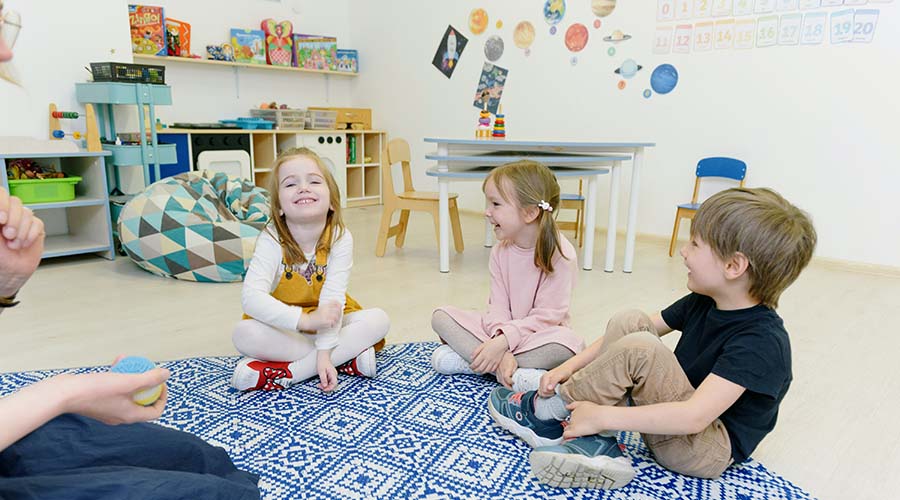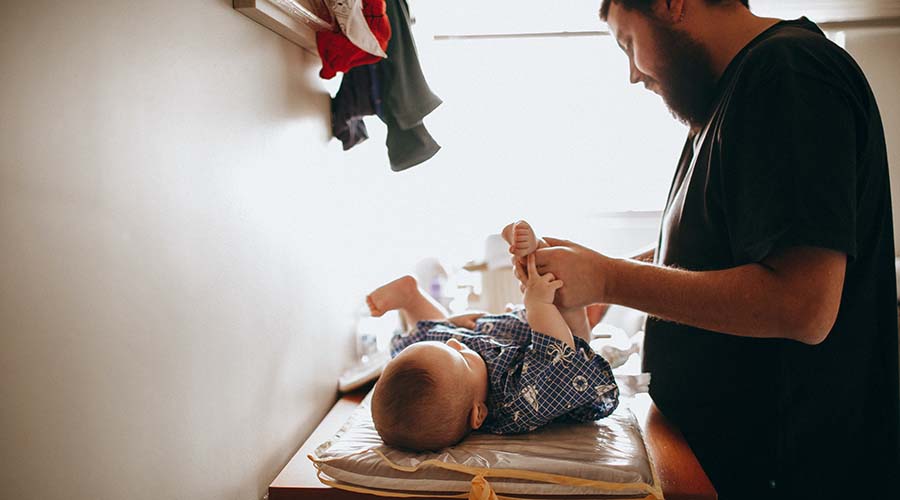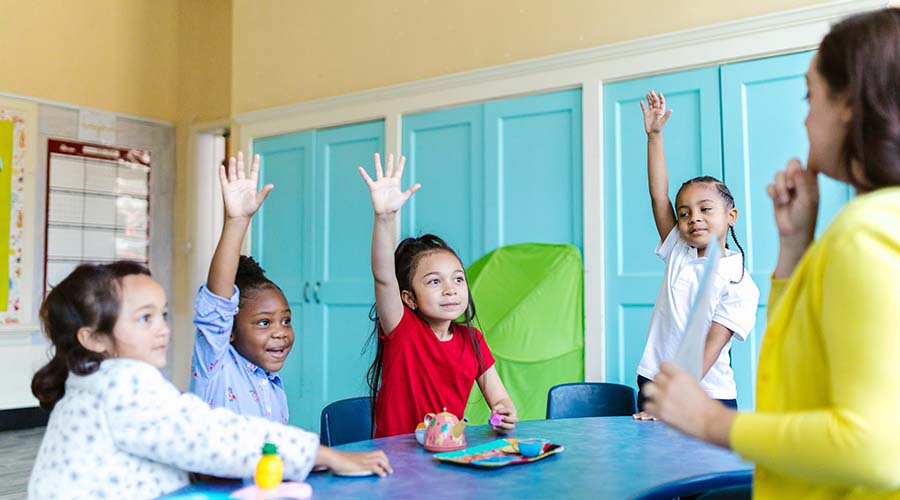settings
children
With Famly since
Most of us who spend time with young children will be familiar with singing ‘Head, shoulders, knees and toes.’ It’s a fun way of learning some of our body parts. Teaching the names of our limbs is a fairly normal activity.
It is quite different, however, when it comes to other parts of the body.
Naming the genitalia is a taboo subject. A lack of knowledge and embarrassment can cause parents and practitioners to flounder. Consequently, young children are fed an array of slang names.
Anne Gallagher, Practice Advisor at the Professional Association for Childcare and Early Years (PACEY) points out, “If we use made-up names for body parts due to our embarrassment, children will learn that they should be embarrassed too.”
Euphemisms can also cause confusion.
Imagine how difficult it would be if we had scores of names for the head. A child trying to tell an adult they had bumped their head might be not only difficult to understand, but potentially in danger.
The same applies to the genitals.
Surely, then, using correct anatomical words for all body parts would be clearer and safer for children?

Using anatomical terms?
Eunice Lumsden, Professor of Child Advocacy at the University of Northampton, says, “The question about whether we should use the anatomical words for all parts of the child’s body is best understood by asking ‘why don’t we?’”
Eunice continues, “When I undertake training in this area, I often start by saying, ‘If l blushed, I would be red all over now!’ Talking about these areas is difficult. Over centuries we have developed a different language for these parts of the body. These vary from family to family, generation to generation. There are also cultural variations and practices”.
Eunice thinks that using the correct names for all parts of the body enables children to speak naturally and explain health issues clearly. And, crucially, “For those children who have experienced sexual abuse, knowing the proper words enables them explain what has happened to them.”
Safeguarding issues are central when it comes to teaching sexual anatomy. Having a common language can only be helpful.
Case study
Becky Dolamore is Headteacher at Rachel Keeling Nursery School in the London Borough of Tower Hamlets. She talks about their approach.
“At Rachel Keeling we are mindful but open with young children. Through our ethos and routines, we encourage children to develop agency with regards to their learning. This includes teaching them that their body belongs to them. This is then weaved through how we support behaviour and respect between peers. For example, asking permission before we touch others’ bodies and respecting children who do not want to hold hands with their friends.” She adds, “It is important that we adults model this respect and sensitivity consistently.”
Becky thinks it is imperative to encourage children, where possible, to manage their own self-care. “When the children need support with intimate care, staff always ask them first, explaining what they are going to do”.
But the staff at Rachel Keeling do not teach anatomical terms during carpet sessions or through specific activities.
Becky explains, “We are clear and transparent with children about bodies in an age-appropriate manner. We may use anatomical terms such a penis, bottom or vulva in a meaningful context such as when we are supporting toileting."
Working with the Under 5s
It is not hard to find natural teachable moments with the Under 5s: several opportunities arise on a daily basis. The rounds of washing, nappy changing, and toileting provide ideal opportunities to use the names of the genitals in natural contexts. The sector is at an advantage in this respect.
Parents may say, “I’m going to clean your back … now let’s wash your penis”. Practitioners may ask a child, “Have you wiped your vulva?”

Staff training and development
For Anne Gallagher, staff education is the place to start. “If practitioners do not know the correct name for a body part, then it is important to learn. We adults need to give ourselves permission to say words such as vagina and testicles, and to practise saying them.”
Eunice Lumsden works with staff on this topic. “For adults, talking about these issues can be very difficult. They often find it embarrassing and, for some, it raises issues from their childhoods.” She continues, “It is vital that any training in this area is done sensitively and with an awareness of the body language in the room. In my experience, people often avert their eyes, fold their arms at their chest, shuffle their bodies”.
Eunice suggests initial activities focussing on naming all parts of the body:
Activity (a)
Aim: To enable practitioners to use the proper words for the body and where they are located
Activity: In small groups label the drawing of a body
Extention: Discuss the activity and talk about what they found difficult and why.
Activity (b)
Aim: To identify all the alternative words (slang / euphemisms) that are used for parts of the body
Activity: In small groups write these on a drawing of a body
Extention: Discuss the names identified, the reasons why and how this might be addressed in with parents and carers.
Case Study
Gregory Lane talks about the practice at London Early Years Foundation (LEYF). “Firstly, this is a topic requiring caution, sensitivity and kindness. There is no shame in the body, but respect is paramount.”
He continues, “We are guided by our safeguarding policies, particularly toilet training. As part of our pedagogy, we have a strand of Home Learning. This practice enables strong partnerships with parents, carers and other professionals”.
“The language we use is agreed during those first essential weeks in Nursery. Any health needs are talked over with parents using the correct anatomical terms for parts of the body. Staying positive and talking about what needs to be talked about- even if a little bit uncomfortable - helps children to feel secure, cared for and respected.”
LEYF nurseries also use the NSPPC’s resources including the PANTS guide. This online resource offers ideas and support.

Conclusion
In terms of where we are with this in the EYFS, I think the majority of practitioners would think it is an area that requires much further development.
Eunice Lumsden’s work highlights that the first thing we can do is to talk about it, place it high on the agenda in all settings. This is the only way that practitioners will become more informed, confident and guided in their practice.
Anne Gallagher is of the firm belief that if parents and carers speak openly and honestly with their children about their bodies, it will strengthen the adult-child relationship. As the child grows, they will be more likely to talk to their parents and carers about the changes to their bodies, asking questions and saying if they think something is wrong.
Learning about all the body parts also encourages a positive and healthy image of the sexual anatomy. It is not a clandestine topic. It also provides a basic language for children to understand their bodies and be able to ask questions about their sexual development later in life.
My friend’s 9 year old daughter, Lily, recently confided in her teacher that she had breast buds. Lily is brought up using the correct anatomical terms for all parts of her body. Maybe this empowers her to talk to chosen people about her early sexual development without embarrassment or taboo? A lesson to us all.
The big ideas
Get 1000s of free EY activities
Want over 7,000 activities? See them in a free 14-day trial. Filter to target learning areas, age groups and topics, and get inspired.
Get started








